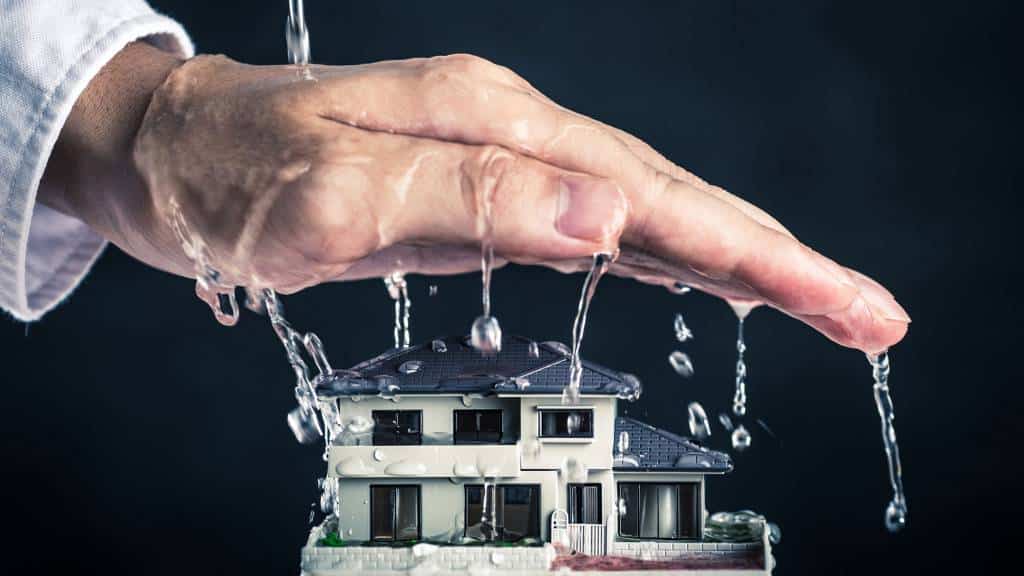How do you actually feel about How Fast Water Damage Can Ruin Your Home?

Leakages not just trigger waste of water but can also create unneeded damage to your home and also advertise unwanted natural development. Sadly, water leaks could go unnoticed since a lot of the pipework in our house is concealed. By looking and recognizing for daily situations that create leaks, you can protect your residence from future leaks and also unnecessary damages. Today, we will consider six leakage creates that may be triggering your pipelines to drip.
Elbowing in origins
A lot of water leakages start outside the house as opposed to inside it. If you see an unexpected reduction in water pressure, claim in your tap, take time to head out and analyze your lawn. You might observe wet spots or sinkholes in your lawn, which may suggest that tree roots are attacking water lines triggering water to permeate out. You can have your plumber check for breach, especially if you have trees or hedges near your building.
Corroded water systems
As time passes by, your plumbing system ages and also rust such as corrosion may begin eating away the pipes. This might be the root cause of staining or bending on your pipes. This asks for an inspection with your plumber promptly. Take into consideration changing the pipes since they are at a greater danger of corrosion than the more recent models if our plumbing system is old.
Malfunctioning Pipe Joints
Pipe joints can deteriorate over time, resulting in water leaks. If you have loud pipes that make ticking or banging sounds, particularly when the hot water is transformed on, your pipe joints are possibly under a lot of stress.
Immediate temperature changes.
Severe temperature changes in our pipelines can trigger them to expand and also acquire unexpectedly. This development and tightening may create cracks in the pipelines, especially if the temperature level are below freezing. If you maintained an eye on how your plumbing functions, it would certainly be best. The presence of the formerly stated situations regularly indicates a high risk.
Poor Water Connectors
At times, a leak can be caused by loose pipes and pipes that supply your home appliances. Typically, moving is what creates the loose water Connections. You might locate when it comes to a cleaning device, a hose pipe might spring a leakage due to drinking throughout the spin cycle. In case of a water connections leakage, you may notice water running straight from the supply line or puddles around your devices.
Obstructed Drains
Clogged drains pipes could be bothersome and also inconveniencing, but they can often wind up causing an overflow resulting in burst pipelines. Keep getting rid of any materials that might drop your drains that might clog them to prevent such aggravations.
All the above are sources of leakages however not all water leakages result from plumbing leakages; some leakages could originate from roof covering leakages. All leakages need to be repaired promptly to prevent water damage.
Leaks not just trigger waste of water but can also create unnecessary damage to your residence as well as advertise undesirable organic development. By comprehending and looking for day-to-day circumstances that create leaks, you can shield your home from future leakages and unneeded damage. Today, we will look at 6 leak triggers that might be triggering your pipelines to drip.
At times, a leak can be created by loose pipes and also pipelines that provide your appliances. In situation of a water connections leak, you may see water running straight from the supply line or pools around your appliances.
How To Check For Water Leak In Your Home
How To Check for Leaks
The average household's leaks can account for nearly 10,000 gallons of water wasted every year and ten percent of homes have leaks that waste 90 gallons or more per day. Common types of leaks found in the home are worn toilet flappers, dripping faucets, and other leaking valves. These types of leaks are often easy to fix, requiring only a few tools and hardware that can pay for themselves in water savings. Fixing easily corrected household water leaks can save homeowners about 10 percent on their water bills.
To check for leaks in your home, you first need to determine whether you're wasting water and then identify the source of the leak. Here are some tips for finding leaks:
Take a look at your water usage during a colder month, such as January or February. If a family of four exceeds 12,000 gallons per month, there are serious leaks.
Check your water meter before and after a two-hour period when no water is being used. If the meter changes at all, you probably have a leak.
Identify toilet leaks by placing a drop of food coloring in the toilet tank. If any color shows up in the bowl after 10 minutes, you have a leak. (Be sure to flush immediately after the experiment to avoid staining the tank.)
Examine faucet gaskets and pipe fittings for any water on the outside of the pipe to check for surface leaks.
Undetected water leaks can happen without the home or business owner even realizing. If you suspect a water leak, but not able to find the source. It is time to contact a professional water leak detection service, The Leak Doctor.
How To Find a Water Leak In Your Home
https://www.leakdoctor.com/blog/How-To-Check-For-Water-Leak-In-Your-Home_AE197.html

I was shown that write-up about How Fast Water Damage Can Ruin Your Home from an associate on a different website. Be sure to take the opportunity to distribute this page if you enjoyed reading it. I treasure reading our article about How to detect water leaks in your home.
Expert diagnostics offered.
Comments on “Exposing the Primary Sources of Leakage Inside The House”